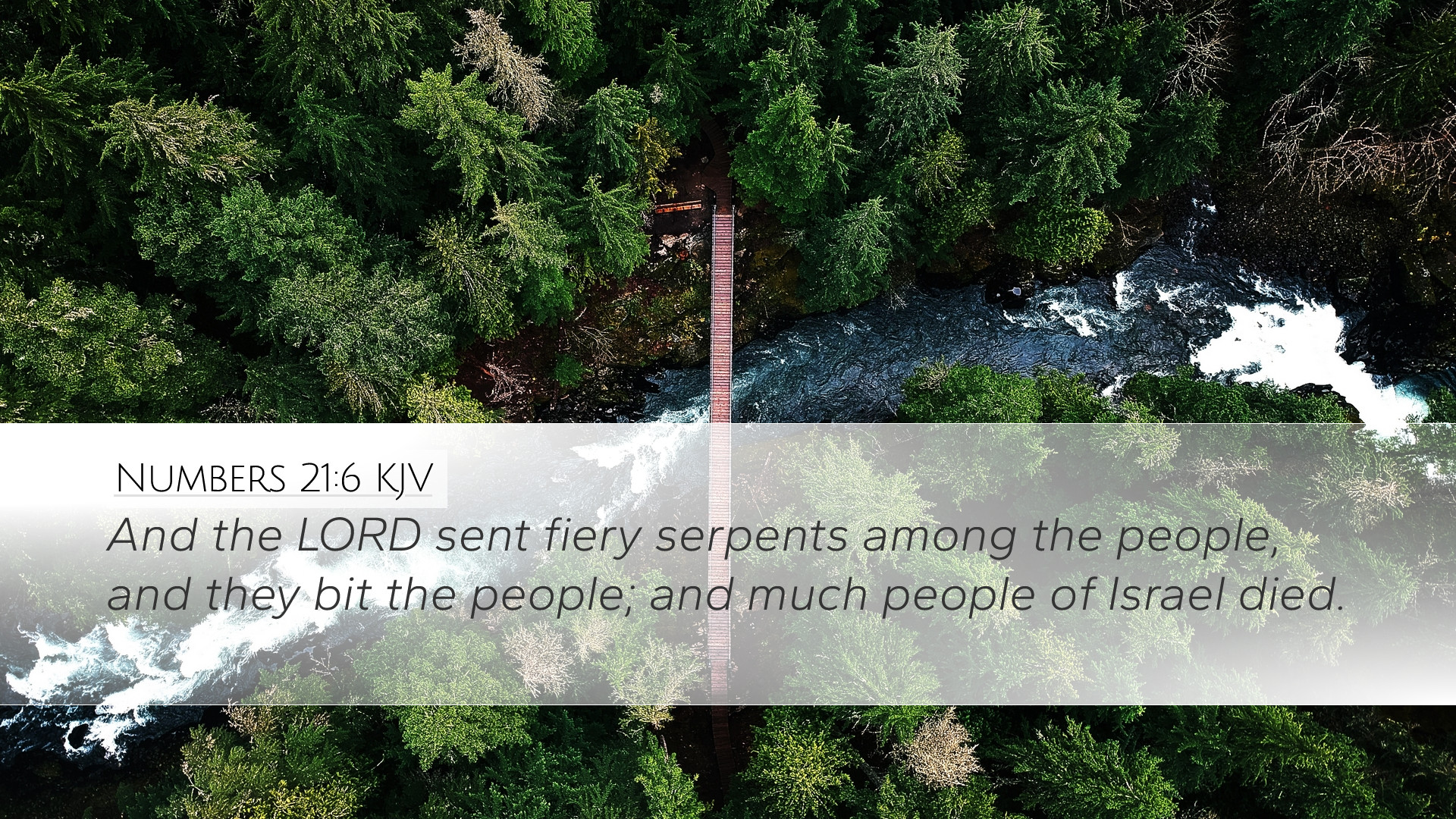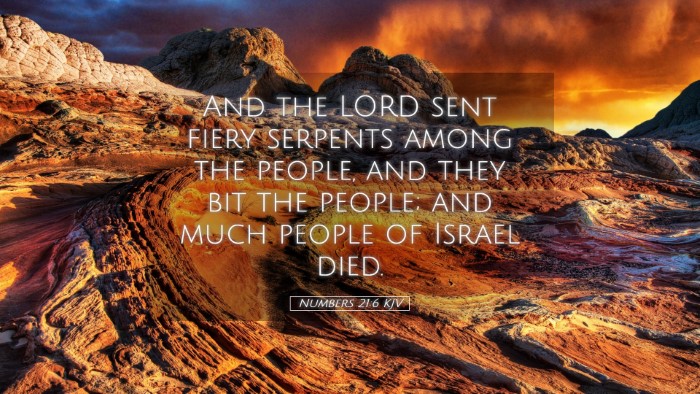Bible Commentary on Numbers 21:6
Verse Context: Numbers 21:6 states, "And the LORD sent fiery serpents among the people, and they bit the people; and much people of Israel died."
Introduction
This passage comes at a pivotal moment in the journey of the Israelites through the wilderness. They have been disobedient and have expressed dissatisfaction regarding their circumstances. This commentary explores the divine retribution indicated in this verse and the broader implications for understanding God's justice, mercy, and the human condition.
Disobedience and Its Consequences
Matthew Henry emphasizes that the fiery serpents were sent as a judgement against the impatience and murmuring of the people. Their failures highlight the consequences of turning away from God’s provisions. The serpents serve as a grim reminder of the severity of divine displeasure towards sin.
Albert Barnes elaborates on the symbolism of the serpents. He notes that in many cultures, serpents represent danger and sin. Thus, their biting signifies not only physical torment but also spiritual peril, marking the people's rebellion against God’s guidance. This incident serves as a profound reflection on the nature of sin and its ramifications.
The Nature of God’s Justice
Commentators agree that God’s actions in sending serpents were not arbitrary but were a reflection of His justice. Adam Clarke posits that while God's love is immense, His justice cannot be overlooked. The fiery serpents become instruments of divine justice to correct the waywardness of His people. Through this, God seeks to maintain holiness and righteousness among His chosen nation.
Divine Punishment as a Teaching Tool
Matthew Henry notes that God's punishments are not merely punitive but serve a corrective purpose. They are intended to lead the people back to repentance and reliance on Him. The bite of the serpents represents the painful awakening necessary for spiritual renewal.
Importance of Repentance
As the narrative unfolds, the Israelites recognize their sin and appeal to Moses for intercession. Albert Barnes notes that their cry for mercy illustrates a pivotal shift from rebellion to seeking God’s favor. It embodies a critical aspect of the faith journey—acknowledging wrongdoing and the need for divine assistance.
Symbolism of the Fiery Serpent
The fiery serpent also serves as a foreshadowing of Christ as seen in John 3:14. Adam Clarke connects the image to Jesus providing salvation. Just as Moses lifted the serpent in the wilderness for healing, so Christ would be lifted up to offer eternal life. This typology illustrates God’s ultimate plan for redemption even amid judgement.
Heeding God’s Warning
The issue of paying attention to divine warnings resurfaces in the commentary. Matthew Henry suggests that the Israelites’ initial neglect of God’s authority culminates in dire consequences. Thus, it serves as a crucial reminder for believers today to reflect on God’s guidance in their lives and respond timely to His call.
The Role of Intercession
Moses' intercessory role is significant in this narrative. Albert Barnes points out that Moses pleads for the people, showcasing the importance of intercession in the community of faith. It is a poignant illustration of the mediator role, ultimately fulfilled in Christ, who intercedes for humanity.
Conclusion
Numbers 21:6 is a profound verse that encapsulates themes of disobedience, divine justice, repentance, and intercession. It challenges pastors, students, theologians, and Bible scholars to reflect deeply on the balance between God’s holiness and mercy.
The fiery serpents remind us that while God is just, He also provides avenues for redemption through repentance and faith in Him. The journey through the wilderness serves as an allegory of the Christian life, filled with trials but also marked by profound opportunities for growth and relationship with the Almighty God.
Further Study Suggestions
- Reflect on the nature of sin and its consequences in your own life.
- Examine how intercessory prayer functions within your community.
- Study the typology of the serpent in relation to Christ's crucifixion.
- Consider the importance of remaining attentive to God's voice amid life’s challenges.


